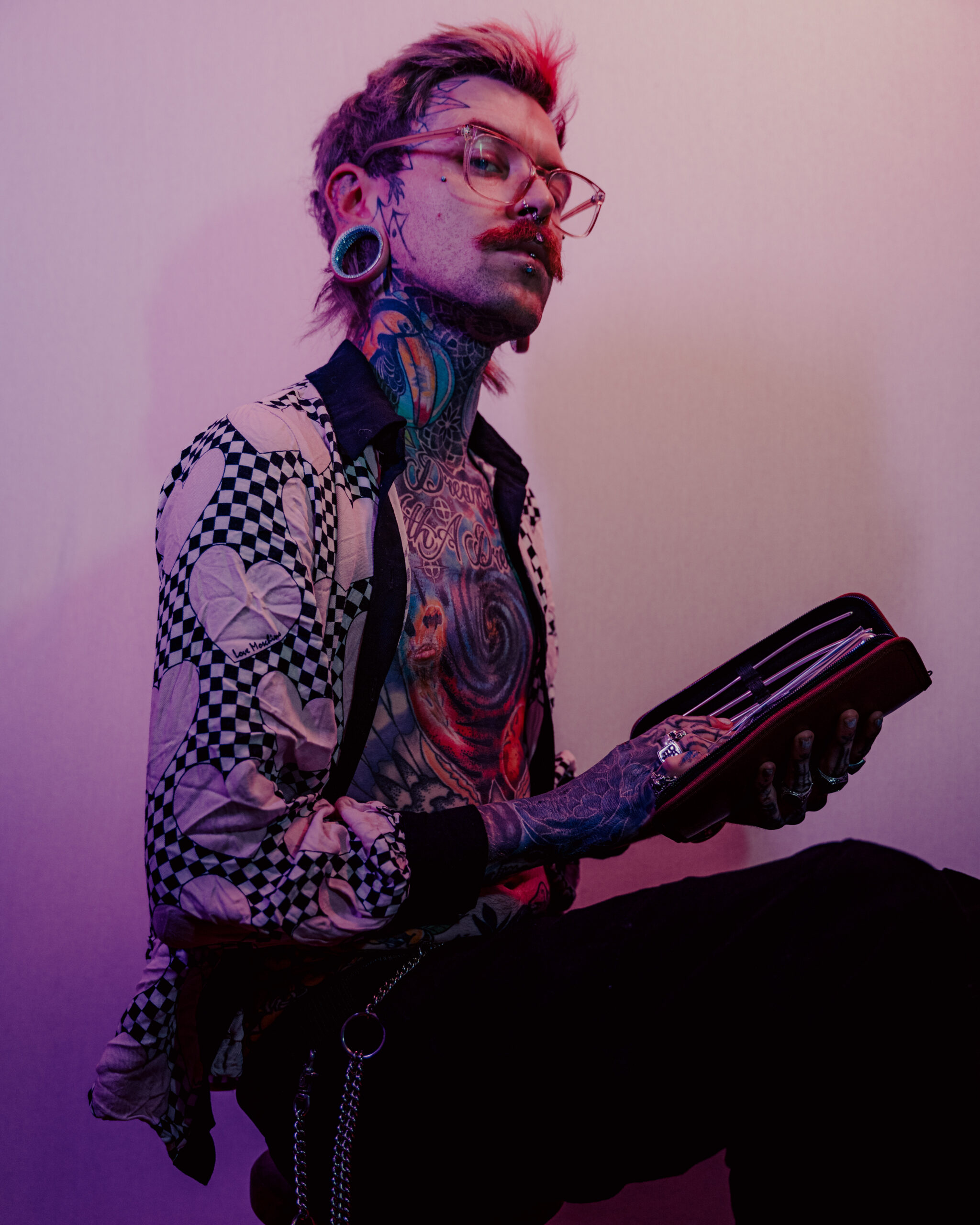Understanding Pansexual Attraction
Pansexuality, an umbrella term encompassing attraction to people regardless of their gender identity or expression, is increasingly gaining recognition within discussions about contemporary relationships. This exploration delves into the multifaceted ways pansexual attraction manifests in romantic and sexual connections, examining its influence on modern love and intimacy.
Definition and Spectrum
Pansexuality encompasses attraction to individuals based on their personality, character, or spirit rather than their gender identity. Individuals who identify as pansexual are drawn to people of all genders, including men, women, transgender individuals, non-binary individuals, and others. This attraction can manifest in romantic, sexual, or platonic relationships.
The spectrum of pansexuality is vast and personal. Some pansexual individuals may feel equally attracted to all genders, while others might experience stronger attractions to certain genders over others.

It’s important to remember that pansexuality is distinct from bisexuality. While both identities involve attraction to multiple genders, bisexuality typically refers to attraction to two genders (most commonly men and women), whereas pansexuality encompasses attraction to all genders.
Beyond the Binary: Gender Fluidity
One significant aspect of understanding pansexual attraction lies in recognizing the fluidity of gender identity within modern society. The traditional binary view of gender—male or female—is increasingly challenged by a broader spectrum of gender identities, including non-binary, transgender, and genderqueer. Pansexuality inherently embraces this fluidity, acknowledging that gender is not a fixed category that determines attraction.
For pansexual individuals, romantic and sexual attraction extends beyond the confines of traditional gender roles. They may be drawn to someone’s personality, sense of humor, intelligence, or shared interests, regardless of their gender expression or identification. This open-minded approach to attraction fosters connections based on genuine compatibility rather than societal expectations.

In modern relationships, pansexuality encourages a more inclusive and accepting understanding of love and intimacy. It challenges conventional norms and promotes the celebration of diversity in all its forms.
Emotional and Intellectual Connections
Pansexual attraction shapes romantic and sexual connections by emphasizing attraction to individuals based on their personality, character, or spirit rather than solely on gender identity. This means pansexual individuals can find themselves drawn to people of all genders – men, women, transgender individuals, non-binary individuals, and others – fostering relationships built on shared values, interests, and emotional connections.
The beauty of pansexuality lies in its inclusivity and acceptance of the diverse spectrum of gender identities. It transcends the traditional binary view of gender, recognizing that attraction can stem from a multitude of factors beyond someone’s gender expression or identification. This openness allows for genuine connections to form based on shared passions, intellectual compatibility, and emotional understanding.
In modern relationships, pansexuality promotes a more progressive and accepting approach to love and intimacy. It challenges societal norms and encourages individuals to explore their attractions without limitations imposed by gender stereotypes. This can lead to richer and more fulfilling relationships that celebrate the unique qualities of each individual involved.
Impact on Relationships
Pansexuality, an evolving concept in modern society, is reshaping the landscape of romantic and sexual attraction. This exploration delves into the complexities of pansexual attraction, examining how it influences contemporary love and intimacy.
Open Communication and Honesty
Open communication and honesty are crucial for any relationship, but they take on particular importance in pansexual relationships. Because societal norms around gender and sexuality can be complex, clear and honest communication about desires, boundaries, and expectations is essential to building trust and intimacy.
Pansexual individuals may experience a wide range of attractions, and it’s important for their partners to understand and respect this fluidity. Open dialogue allows partners to learn about each other’s needs and preferences, fostering a sense of understanding and acceptance.
Navigating Societal Expectations
Navigating societal expectations can pose unique challenges for pansexual individuals in modern relationships. Traditional gender roles and societal norms often influence how people perceive and interact within romantic partnerships. These ingrained beliefs can create misunderstandings or prejudice towards non-traditional relationship structures.
- Challenges in Understanding:
- Stigma and Preconceived Notions:
- Family and Social Pressure:
Challenges and Misconceptions
One common misconception about pansexuality is that it implies a lack of preference or a desire to be with everyone. In reality, pansexual individuals have distinct attractions, just as people of any other sexual orientation do. Their attraction is not determined by gender identity but rather by a combination of personality, values, and connection.
Another misconception is that pansexuality is a passing phase or a trend. Pansexuality is a genuine and valid sexual orientation that reflects a deep-seated understanding of one’s attractions. It is not a choice or something that can be easily changed.
Misconceptions about pansexuality can lead to prejudice and discrimination. It’s important to educate oneself about this identity and challenge stereotypes to create a more inclusive and accepting society for all individuals, regardless of their sexual orientation.
Open communication, empathy, and a willingness to learn are crucial for fostering understanding and acceptance of pansexual individuals within romantic and sexual relationships and broader society.
Modern Expression of Pansexuality
Pansexuality, an evolving concept in modern society, is reshaping the landscape of romantic and sexual attraction. This exploration delves into the complexities of pansexual attraction, examining how it influences contemporary love and intimacy.
Representation in Media and Culture
Pansexuality, an umbrella term encompassing attraction to people regardless of their gender identity or expression, is increasingly gaining recognition within discussions about contemporary relationships. This exploration delves into the multifaceted ways pansexual attraction manifests in romantic and sexual connections, examining its influence on modern love and intimacy.
Pansexuality encompasses attraction to individuals based on their personality, character, or spirit rather than their gender identity. Individuals who identify as pansexual are drawn to people of all genders, including men, women, transgender individuals, non-binary individuals, and others. This attraction can manifest in romantic, sexual, or platonic relationships.

The spectrum of pansexuality is vast and personal. Some pansexual individuals may feel equally attracted to all genders, while others might experience stronger attractions to certain genders over others.
It’s important to remember that pansexuality is distinct from bisexuality. While both identities involve attraction to multiple genders, bisexuality typically refers to attraction to two genders (most commonly men and women), whereas pansexuality encompasses attraction to all genders.
One significant aspect of understanding pansexual attraction lies in recognizing the fluidity of gender identity within modern society. The traditional binary view of gender—male or female—is increasingly challenged by a broader spectrum of gender identities, including non-binary, transgender, and genderqueer. Pansexuality inherently embraces this fluidity, acknowledging that gender is not a fixed category that determines attraction.
For pansexual individuals, romantic and sexual attraction extends beyond the confines of traditional gender roles. They may be drawn to someone’s personality, sense of humor, intelligence, or shared interests, regardless of their gender expression or identification. This open-minded approach to attraction fosters connections based on genuine compatibility rather than societal expectations.
In modern relationships, pansexuality encourages a more inclusive and accepting understanding of love and intimacy. It challenges conventional norms and promotes the celebration of diversity in all its forms.
Pansexual attraction shapes romantic and sexual connections by emphasizing attraction to individuals based on their personality, character, or spirit rather than solely on gender identity. This means pansexual individuals can find themselves drawn to people of all genders – men, women, transgender individuals, non-binary individuals, and others – fostering relationships built on shared values, interests, and emotional connections.
The beauty of pansexuality lies in its inclusivity and acceptance of the diverse spectrum of gender identities. It transcends the traditional binary view of gender, recognizing that attraction can stem from a multitude of factors beyond someone’s gender expression or identification. This openness allows for genuine connections to form based on shared passions, intellectual compatibility, and emotional understanding.
In modern relationships, pansexuality promotes a more progressive and accepting approach to love and intimacy. It challenges societal norms and encourages individuals to explore their attractions without limitations imposed by gender stereotypes. This can lead to richer and more fulfilling relationships that celebrate the unique qualities of each individual involved.
Pansexuality, an evolving concept in modern society, is reshaping the landscape of romantic and sexual attraction. This exploration delves into the complexities of pansexual attraction, examining how it influences contemporary love and intimacy.
Open communication and honesty are crucial for any relationship, but they take on particular importance in pansexual relationships. Because societal norms around gender and sexuality can be complex, clear and honest communication about desires, boundaries, and expectations is essential to building trust and intimacy.
Pansexual individuals may experience a wide range of attractions, and it’s important for their partners to understand and respect this fluidity. Open dialogue allows partners to learn about each other’s needs and preferences, fostering a sense of understanding and acceptance.
Navigating societal expectations can pose unique challenges for pansexual individuals in modern relationships. Traditional gender roles and societal norms often influence how people perceive and interact within romantic partnerships. These ingrained beliefs can create misunderstandings or prejudice towards non-traditional relationship structures.
- Challenges in Understanding:
- Stigma and Preconceived Notions:
- Family and Social Pressure:
One common misconception about pansexuality is that it implies a lack of preference or a desire to be with everyone. In reality, pansexual individuals have distinct attractions, just as people of any other sexual orientation do. Their attraction is not determined by gender identity but rather by a combination of personality, values, and connection.
Another misconception is that pansexuality is a passing phase or a trend. Pansexuality is a genuine and valid sexual orientation that reflects a deep-seated understanding of one’s attractions. It is not a choice or something that can be easily changed.
Misconceptions about pansexuality can lead to prejudice and discrimination. It’s important to educate oneself about this identity and challenge stereotypes to create a more inclusive and accepting society for all individuals, regardless of their sexual orientation.
Open communication, empathy, and a willingness to learn are crucial for fostering understanding and acceptance of pansexual individuals within romantic and sexual relationships and broader society.
Online Communities and Support Networks
Pansexuality, an evolving concept in modern society, is reshaping the landscape of romantic and sexual attraction. This exploration delves into the complexities of pansexual attraction, examining how it influences contemporary love and intimacy.
Open communication and honesty are crucial for any relationship, but they take on particular importance in pansexual relationships. Because societal norms around gender and sexuality can be complex, clear and honest communication about desires, boundaries, and expectations is essential to building trust and intimacy.
Pansexual individuals may experience a wide range of attractions, and it’s important for their partners to understand and respect this fluidity. Open dialogue allows partners to learn about each other’s needs and preferences, fostering a sense of understanding and acceptance.
Navigating societal expectations can pose unique challenges for pansexual individuals in modern relationships. Traditional gender roles and societal norms often influence how people perceive and interact within romantic partnerships. These ingrained beliefs can create misunderstandings or prejudice towards non-traditional relationship structures.
- Challenges in Understanding:
- Stigma and Preconceived Notions:
- Family and Social Pressure:
One common misconception about pansexuality is that it implies a lack of preference or a desire to be with everyone. In reality, pansexual individuals have distinct attractions, just as people of any other sexual orientation do. Their attraction is not determined by gender identity but rather by a combination of personality, values, and connection.
Another misconception is that pansexuality is a passing phase or a trend. Pansexuality is a genuine and valid sexual orientation that reflects a deep-seated understanding of one’s attractions. It is not a choice or something that can be easily changed.
Misconceptions about pansexuality can lead to prejudice and discrimination. It’s important to educate oneself about this identity and challenge stereotypes to create a more inclusive and accepting society for all individuals, regardless of their sexual orientation.
Open communication, empathy, and a willingness to learn are crucial for fostering understanding and acceptance of pansexual individuals within romantic and sexual relationships and broader society.
Online communities and support networks have become increasingly vital for pansexual individuals navigating the complexities of modern relationships. These platforms provide safe spaces for connection, sharing experiences, and seeking advice from others who understand their unique journeys.
- Shared Experiences:
- Building Community:
- Access to Resources:
Evolution of Language and Identity
The evolving concept of pansexuality is transforming the landscape of romantic and sexual attraction, reshaping how people understand and express their desires. This exploration delves into the multifaceted ways pansexual attraction manifests in modern relationships, examining its influence on love and intimacy.
Pansexuality, encompassing attraction to individuals regardless of gender identity or expression, challenges traditional notions of sexuality and embraces a spectrum of experiences. It emphasizes connection based on personality, character, and shared values rather than solely relying on gender as a defining factor.
Within modern relationships, pansexual attraction fosters inclusivity and acceptance, encouraging a celebration of diversity in all its forms. It empowers individuals to explore their attractions authentically without limitations imposed by societal norms or expectations.
Navigating societal perceptions can present unique challenges for pansexual individuals in romantic relationships. Preconceived notions and stereotypes surrounding gender roles and sexuality can lead to misunderstandings, prejudice, and difficulty finding acceptance from family or wider social circles. Open communication and education are crucial for dismantling these barriers and fostering a more inclusive environment.
Understanding pansexuality requires moving beyond rigid definitions and embracing the fluidity of human experience. It involves recognizing that gender is a spectrum and attraction can extend beyond traditional binary constructs. Pansexual individuals, like those with any other sexual orientation, deserve respect and understanding in their pursuit of love and connection.
The evolution of language surrounding sexuality, including the emergence and acceptance of terms like pansexuality, reflects a growing awareness and willingness to embrace diverse experiences. This evolving language is essential for creating a more accurate and inclusive representation of human sexuality and fostering a society that celebrates individual identities and expressions.
sybian
My Mental Health Rocks
The Sway NYC
- Neck Line Filler Treatment Near Hersham, Surrey - June 2, 2025
- The Devastating Effects Of Ghosting And How It Affects Self-esteem - June 1, 2025
- Profhilo Treatment Near Forest Green, Surrey - May 31, 2025
